Qatar Carbonates and Carbon Storage Research Centre
Type of resources
Topics
Keywords
Contact for the resource
Provided by
Years
Formats
Update frequencies
-
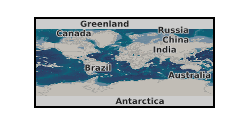
The datasets contain 5 stitched X-ray micro-tomographic images (grey-scale, doped, difference, segmented porespace and segmented micro-porespace with porespace) and 3 X-ray nano-tomographic images of a region of microporous porespace in Estaillades Limestone. The x-ray tomographic images were acquired at a voxel-resolution of 3.9676 µm using a Zeiss Versa XRM-510 flat-panel detector at 70 kV, 6W, and 85 µA with an exposure time of 0.037s and 64 frames. The X-ray nano-tomographic images were reconstructed using a proprietary filtered back projection algorithm from a set of 1601 projections, collected with the Zeiss Ultra 810 with 32nm voxel size using a 5.4keV energy quasi-monochromatic beam with an exposure time of 90s. The data was collected at Imperial College London and Zeiss Labs with the aim of investigating pore-scale microporosity in carbonates with a heterogenous pore structure. Understanding the effect of microporosity on flow is important in many natural and industrial processes such as contaminant transport, and geo-sequestration of supercritical CO2 to address global warming. These tomographic images can be used for validating various pore-scale flow models such as direct simulations, pore-network and neural network models for upscaling flow across scales.
-
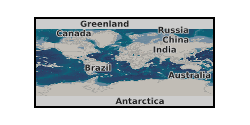
The images in this dataset are a sample of Doddington Sandstone from a micro-computed tomography (micro-CT) scan acquired with a voxel resolution of 4.2µm. This dataset is part of a study on the effects of Voxel Resolution in a study of flow in porous media. A brief overview of this study summarised from Shah et al 2015 follows. A fundamental understanding of flow in porous media at the pore-scale is necessary to be able to upscale average displacement processes from core to reservoir scale. The study of fluid flow in porous media at the pore-scale consists of two key procedures: Imaging reconstruction of three-dimensional (3D) pore space images; and modelling such as with single and two-phase flow simulations with Lattice-Boltzmann (LB) or Pore-Network (PN) Modelling. Here we analyse pore-scale results to predict petrophysical properties such as porosity, single phase permeability and multi-phase properties at different length scales. The fundamental issue is to understand the image resolution dependency of transport properties, in order to up-scale the flow physics from pore to core scale. In this work, we use a high resolution micro-computed tomography (micro-CT) scanner to image and reconstruct three dimensional pore-scale images of five sandstones and five complex carbonates at four different voxel resolutions (4.4µm, 6.2µm, 8.3µm and 10.2µm, scanning the same physical field of view. S.M.Shah, F. Gray, J.P. Crawshaw and E.S. Boek, 2015. Micro-Computed Tomography pore-scale study of flow in porous media: Effect of Voxel Resolution. Advances in Water Resources July 2015 doi:10.1016/j.advwatres.2015.07.012 We gratefully acknowledge permission to publish and funding from the Qatar Carbonates and Carbon Storage Research Centre (QCCSRC), provided jointly by Qatar Petroleum, Shell, and Qatar Science & Technology Park. Qatar Petroleum remain copyright owner.
-
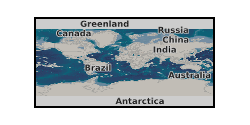
The images in this dataset are a sample of Doddington Sandstone from a micro-computed tomography (micro-CT) scan acquired with a voxel resolution of 6.4µm. This dataset is part of a study on the effects of Voxel Resolution in a study of flow in porous media. A brief overview of this study summarised from Shah et al 2015 follows. A fundamental understanding of flow in porous media at the pore-scale is necessary to be able to upscale average displacement processes from core to reservoir scale. The study of fluid flow in porous media at the pore-scale consists of two key procedures: Imaging reconstruction of three-dimensional (3D) pore space images; and modelling such as with single and two-phase flow simulations with Lattice-Boltzmann (LB) or Pore-Network (PN) Modelling. Here we analyse pore-scale results to predict petrophysical properties such as porosity, single phase permeability and multi-phase properties at different length scales. The fundamental issue is to understand the image resolution dependency of transport properties, in order to up-scale the flow physics from pore to core scale. In this work, we use a high resolution micro-computed tomography (micro-CT) scanner to image and reconstruct three dimensional pore-scale images of five sandstones and five complex carbonates at four different voxel resolutions (4.4ìm, 6.2ìm, 8.3ìm and 10.2ìm, scanning the same physical field of view. S.M.Shah, F. Gray, J.P. Crawshaw and E.S. Boek, 2015. Micro-Computed Tomography pore-scale study of flow in porous media: Effect of Voxel Resolution. Advances in Water Resources July 2015 doi:10.1016/j.advwatres.2015.07.012 We gratefully acknowledge permission to publish and funding from the Qatar Carbonates and Carbon Storage Research Centre (QCCSRC), provided jointly by Qatar Petroleum, Shell, and Qatar Science & Technology Park. Qatar Petroleum remain copyright owners
-
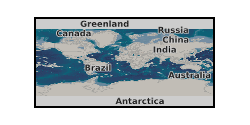
This dataset contains 10 three dimensional x-ray tomographic images of CO2-acidified brine reacting with Ketton limestone at a voxel size of 3.8 microns. It includes the unreconstructed projections (.txrm), the reconstructed images (.txm), and the masked and cropped segmented images (.am and .raw). The rock was imaged during dissolution 10 times over the course of 2.5 hours. Details can be found in Menke et al., 2015 in the journal Environmental Science and Technology.
-
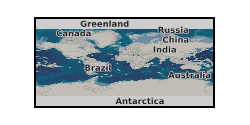
The datasets contains two sets of three dimensional images of Ketton carbonate core of size 5 mm in diameter and 11 mm in length scanned at 7.97µm voxel resolution using Versa XRM-500 X-ray Microscope. The first set includes 3D dataset of dry (reference) Ketton carbonate. The second set includes 3D dataset of reacted Ketton carbonate using hydrochloric acid.
-
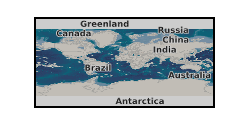
The data contains three-dimensional maps of the temporal and spatial distribution of tracer concentration during miscible displacements with aqueous solutions in two cylindrical porous samples, thus including beadpack (BP) and Ketton Limestone (KL). The dynamic imaging of the displacement process was conducted using two different PET scanners, namely a Siemens Biograph 64 PET/CT for the experiments with the BP (at Imanova Ltd, UK) and a Siemens INVEON DPET for the experiments with KL (at Stanford University, USA). The experiments were carried out at flow rates, q = 10 mL/min for BP and q = 4 mL/min for KL. Each PET image represents an average over a constant time frame (45 frames of 20 seconds each for BP and 40 frames of 60 seconds each for KL). For BP, each 3D tomogram includes (128 x 128 x 111) voxels with size (1.34 x 1.34 x 2) mm3. For KL, each 3D tomogram includes (128 x 128 x 159) voxels with size (0.78 x 0.78 x 0.8) mm3. The PET dataset was used in Kurotori et al. (2018)* to characterise mm-scale dispersion during miscible displacements in these two porous media. The experimental observations of the spatio-temporal evolution of the tracer plume can also be used as a benchmark test for different numerical models for solute transport in heterogeneous porous media. Further details on the use of the PET images can be found in Kurotori et al. (2018). *T. Kurotori, C. Zahasky, S. A. Hosseinzadeh Hejazi, S.M. Shah, S.M. Benson, Measuring, imaging and modelling solute transport in a microporous limestone, Chemical Engineering Science (2018), under review.
-
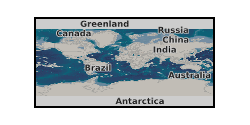
Carbon dioxide (CO2) injection into deep saline aquifers is governed by a number of physico-chemical processes including mineral dissolution and precipitation, multiphase fluid flow, and capillary trapping. These processes can be coupled, however, the impact of fluid-rock reaction on the multiphase flow properties is difficult to study and is not simply correlated to variation in rock porosity. We observed the impact of rock mineral dissolution on multiphase flow properties in two carbonate rocks with distinct pore structures. The Ketton carbonate was an ooidal limestone with a distinct bimodal pore structure whereas the Estaillades limestone was a bioclastic limestone with a wide range of pore sizes. Observations of steady state N2-water relative permeability and residual trapping were obtained at 100 bars fluid pressure and 22°C, with X-ray tomography used to estimate fluid saturation. These tests alternated with steps in which mineral was uniformly dissolved into solution from the rock cores using an aqueous solution with a temperature controlled acid. Eight alternating sequences of dissolution and flow measurement were performed, with on average 0.5% of the mass of the rocks dissolved at each stage. A sequence of mercury injection capillary pressure measurements were conducted on a parallel set of samples undergoing the same treatment to characterize the evolving pore size distribution and corresponding capillary pressure characteristics. Variations in the multiphase flow properties were observed to correspond to the changes in the underlying pore structure. In the Ketton carbonate, dissolution resulted in an increase of the fraction of pore volume made up by the smallest pores and a corresponding increase in the fraction made up by the largest pores. This resulted in a systematic increase in the relative permeability to the nonwetting phase and decrease in relative permeability of the wetting phase. There was also a modest but systematic decrease in residual trapping. In the Estaillades carbonate, dissolution resulted in an increase in the fraction of pore volume made up by pores in the central range of the initial pore size distribution, and a corresponding decrease in the fraction made up by both the smallest and largest pores. This resulted in a decrease in the relative permeability to both the wetting and nonwetting fluid phases and no discernible impact on the residual trapping. In summary, the impact of rock matrix dissolution will be strongly dependent on the impact of that dissolution on the underlying pore structure of the rock. However, if the variation in pore structure can be observed or estimated with modelling, then it should be possible to estimate the impacts on multiphase flow properties.
-
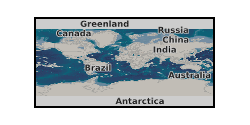
A laboratory µ-CT scanner was used to image the dissolution of Ketton, Estaillades, and Portland limestones in the presence of CO2-acidified brine at reservoir conditions (10 MPa and 50 °C) at two injected acid strengths for a period of 4 h. Each sample was scanned between 6 and 10 times at ~4 µm resolution and multiple effluent samples were extracted. See also paper: H.P. Menke et al. Geochimica et Cosmochimica Acta 204 (2017) 267-285. https://doi.org/10.1016/j.gca.2017.01.053.
-
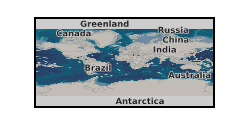
Grant: ACT ELEGANCY, Project No 271498. This repository includes CMG simulation input and output files, processed micro-CT data, figure 3 data and plot, pore network modeling sensitivity examples
-
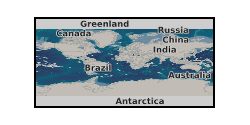
The datasets contain time-resolved synchrotron X-ray micro-tomographic images (grey-scale and segmented) of multiphase (brine-oil) fluid flow (during drainage and imbibition) in a carbonate rock sample at reservoir pressure conditions. The tomographic images were acquired at a voxel-resolution of 3.28 µm and time-resolution of 38 s. The data were collected at beamline I13 of Diamond Light Source, U.K., with the aim of investigating pore-scale processes during immiscible fluid displacement under a capillary-controlled flow regime. Understanding the pore-scale dynamics is important in many natural and industrial processes such as water infiltration in soils, oil recovery from reservoir rocks, geo-sequestration of supercritical CO2 to address global warming, and subsurface non-aqueous phase liquid contaminant transport. Further details of the sample preparation and fluid injection strategy can be found in Singh et al. (2017). These time-resolved tomographic images can be used for validating various pore-scale displacement models such as direct simulations, pore-network and neural network models, as well as for investigating flow mechanisms related to the displacement and trapping of the non-wetting phase in the pore space.
 NERC Data Catalogue Service
NERC Data Catalogue Service